|
|
|
|
|
|
|
|
August 4, 2022 | ISSUE 37 |
|
|
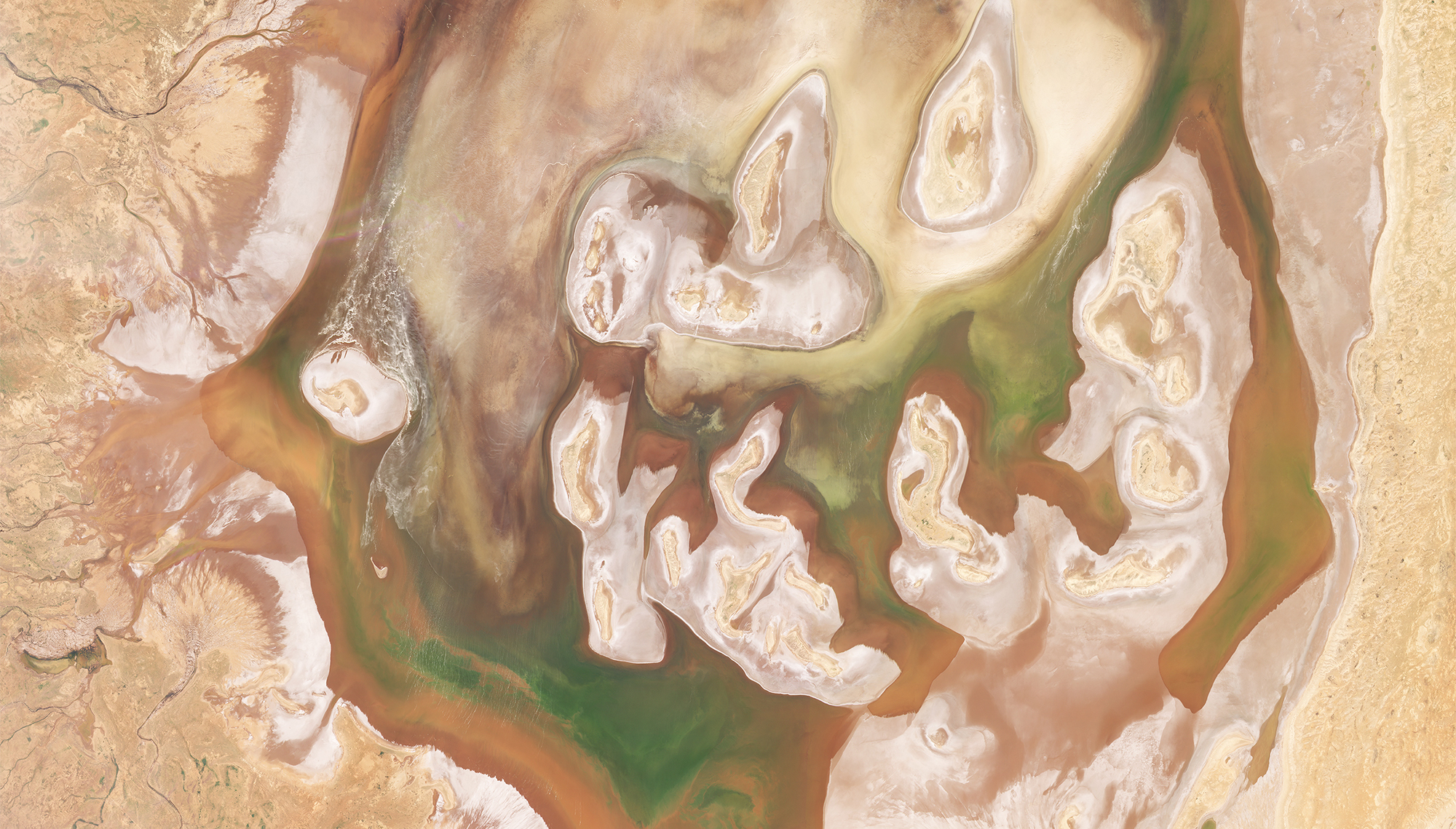 |
PlanetScope • Lake Frome, Australia • January 28, 2022 |
In this week’s issue: We discuss what makes certain satellite images artistically abstract, a moon valley displays otherworldly topography in Chile, and an aircraft carrier does donuts in the South China Sea. |
|
|
|
|
FEATURED STORYAbstraction
Here’s a secret: when we share images—either here, on social media, or in the news—our goal is to make the image as easy to understand as possible. Our team designs each shot so its message is explicit and unambiguous. But a multitude of areas on Earth’s surface challenge this visual readability. And the images of them are—as the artists say—abstract. |
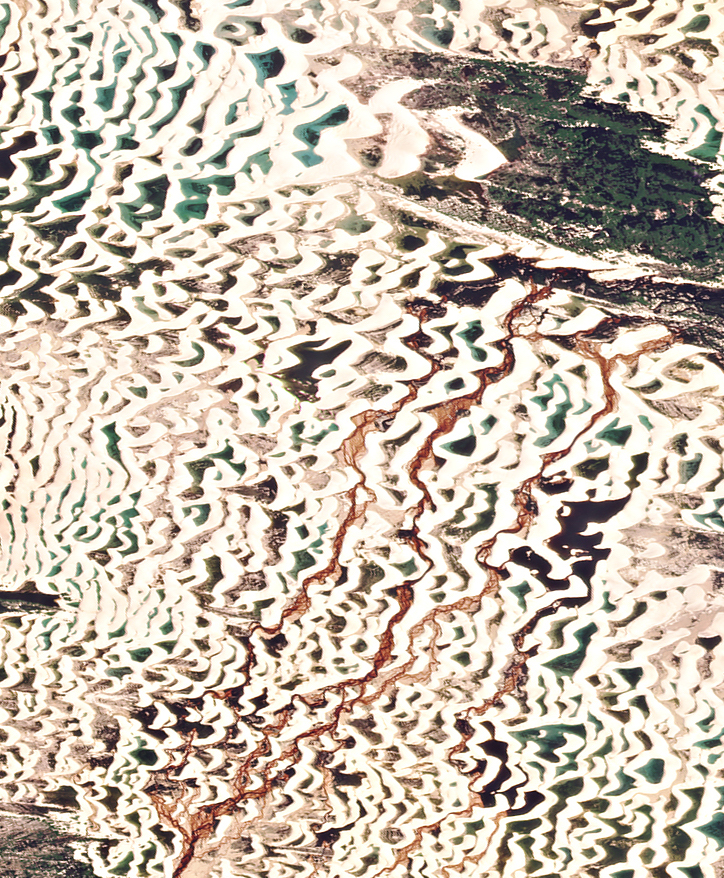 |
PlanetScope • Lençóis Maranhenses National Park, Brazil • May 8, 2022 |
Perhaps you use the word “abstract” to refer to styles you don’t quite understand: a child’s incomprehensible finger painting, the works of Jackson Pollock, or NFTs. But abstract in general refers to art that is less concerned with representing visual reality and more so with shapes, colors, and forms. The word “abstract” derives from the Latin abstractus, which means “drawn away from.” In the context of satellite imagery, we can think of abstract images as ones that are devoid of visual cues that typically clue us in on what’s happening. |
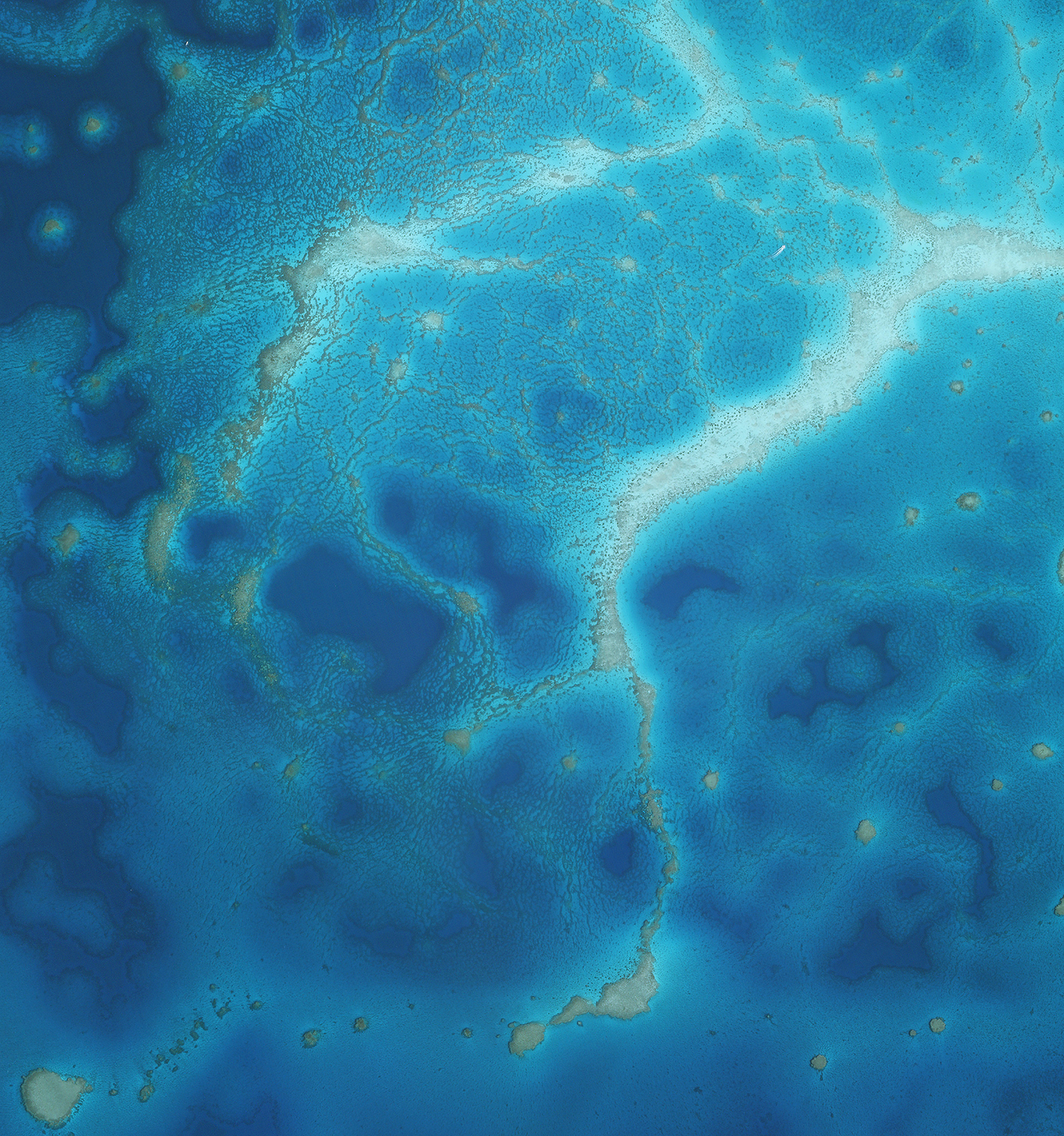 |
SkySat • Red Sea, Saudi Arabia • February 2, 2020 |
So what are the typical signs that make satellite images digestible? Take the following scene of a fire burning in an agricultural field. While the image is certainly painterly, it’s not exactly abstract. We immediately have a general sense of what we're looking at: center pivot irrigation farmland and a fire, even indicating the wind's direction. |
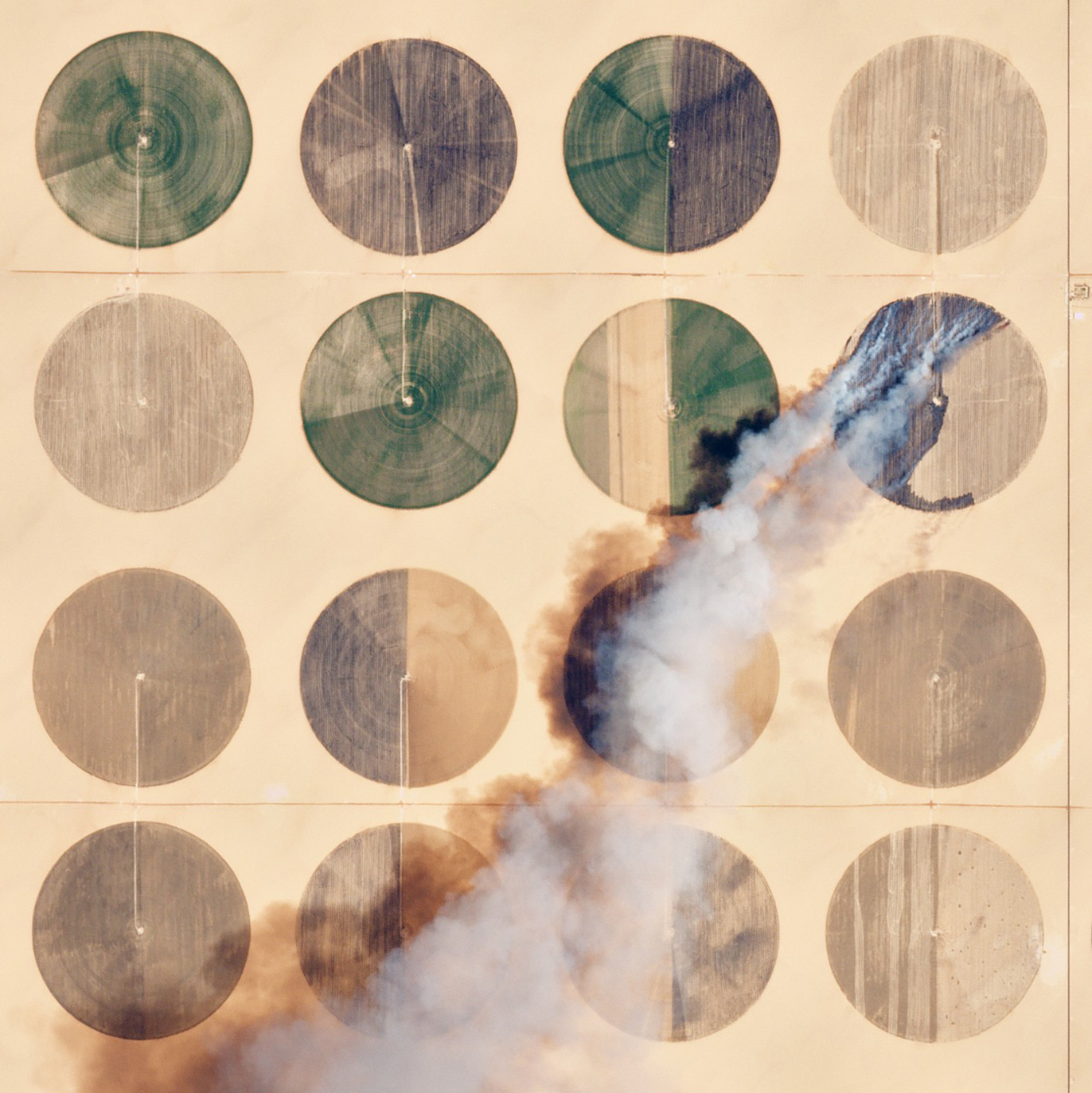 |
PlanetScope • Toshka, Egypt • May 12, 2016 |
But in the image below, nothing immediately jumps out for us to grab onto. The colors and patterns suggest water, but other than that reference we’re free floating—a particularly concerning notion considering this is a photo of Florida’s crocodile-infested southern tip. |
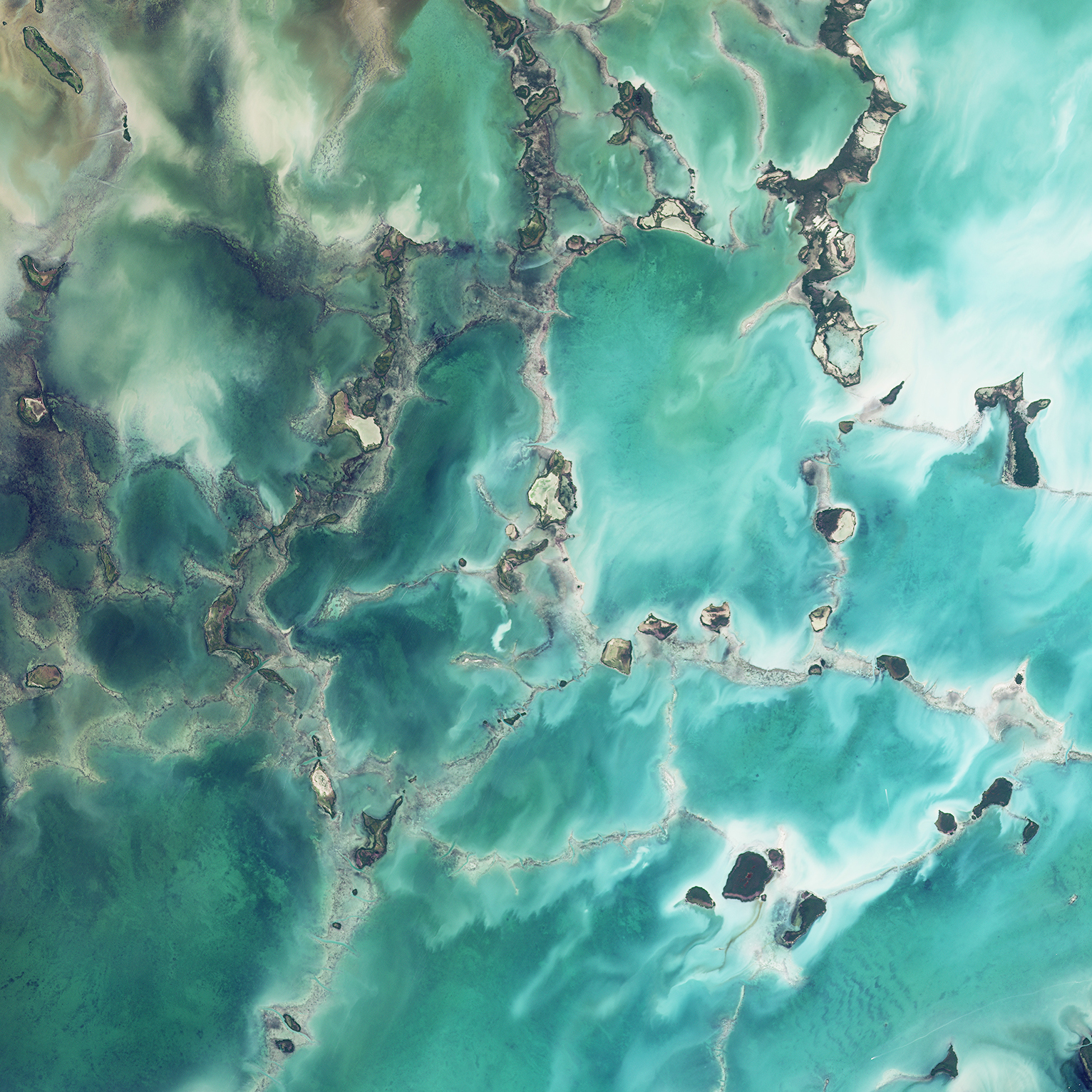 |
PlanetScope • Everglades National Park, Florida, USA • November 24, 2021 |
Perhaps the most noticeable abstract quality of satellite images is their absence of a horizon line. We’re accustomed to viewing the world with depth, and horizon lines help create this perspective. Even the view from a mountaintop, plane, or the International Space Station has this orienting factor. But top-down satellite images render reality in 2D, squashing depth and sense of space with it. |
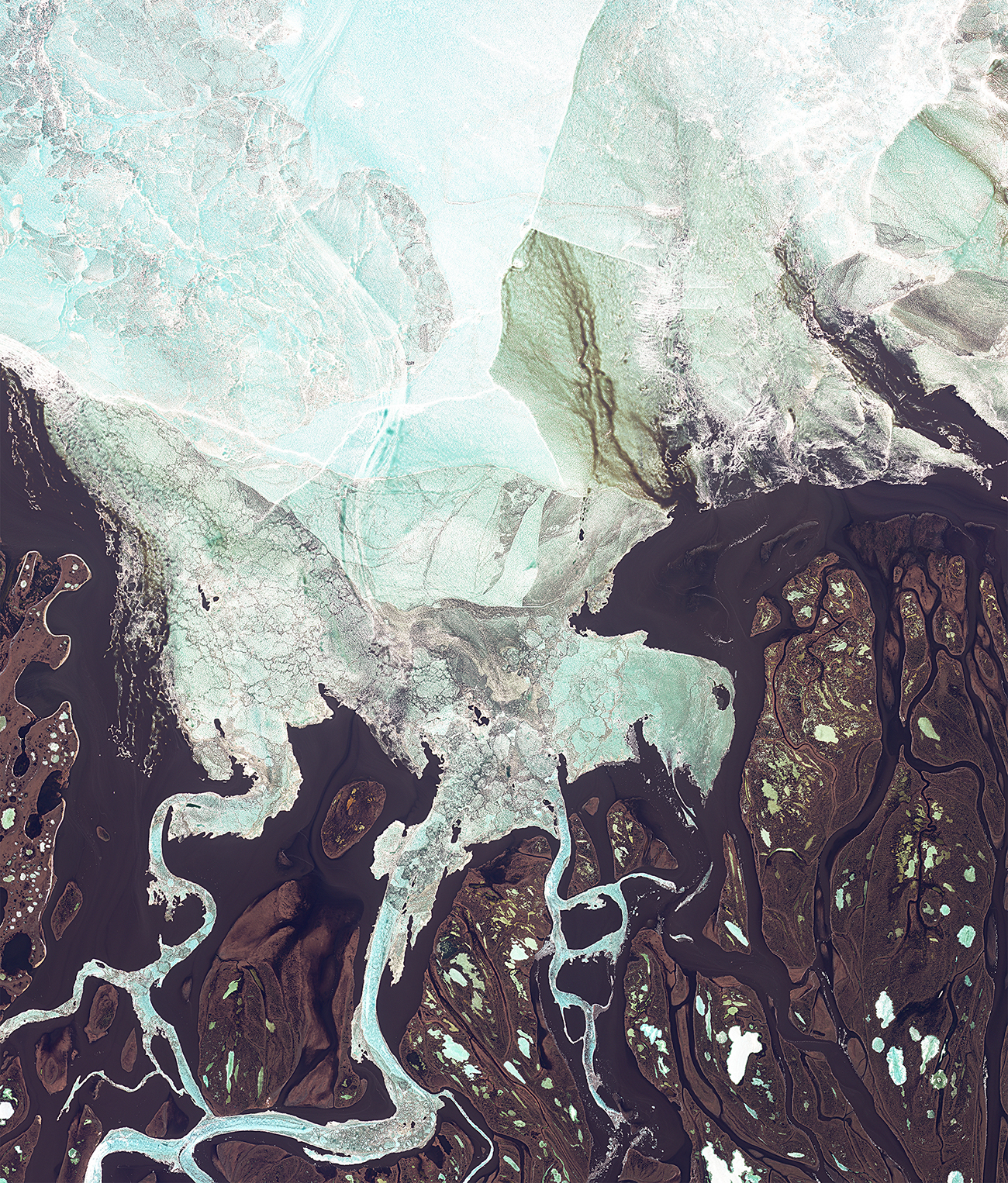 |
PlanetScope • Lena River Delta, Siberia, Russia • June 12, 2022 |
|
And since we’re talking orientation, let’s get into cardinal directions. The dominant design of the world atlas is structured with north as “up” and south as “down.” But this decision is arbitrary. You can orient the world in any direction, but by doing so you risk the element of confusion. We’re accustomed to places looking a “certain way,” so abstract deviations often appear strange. |
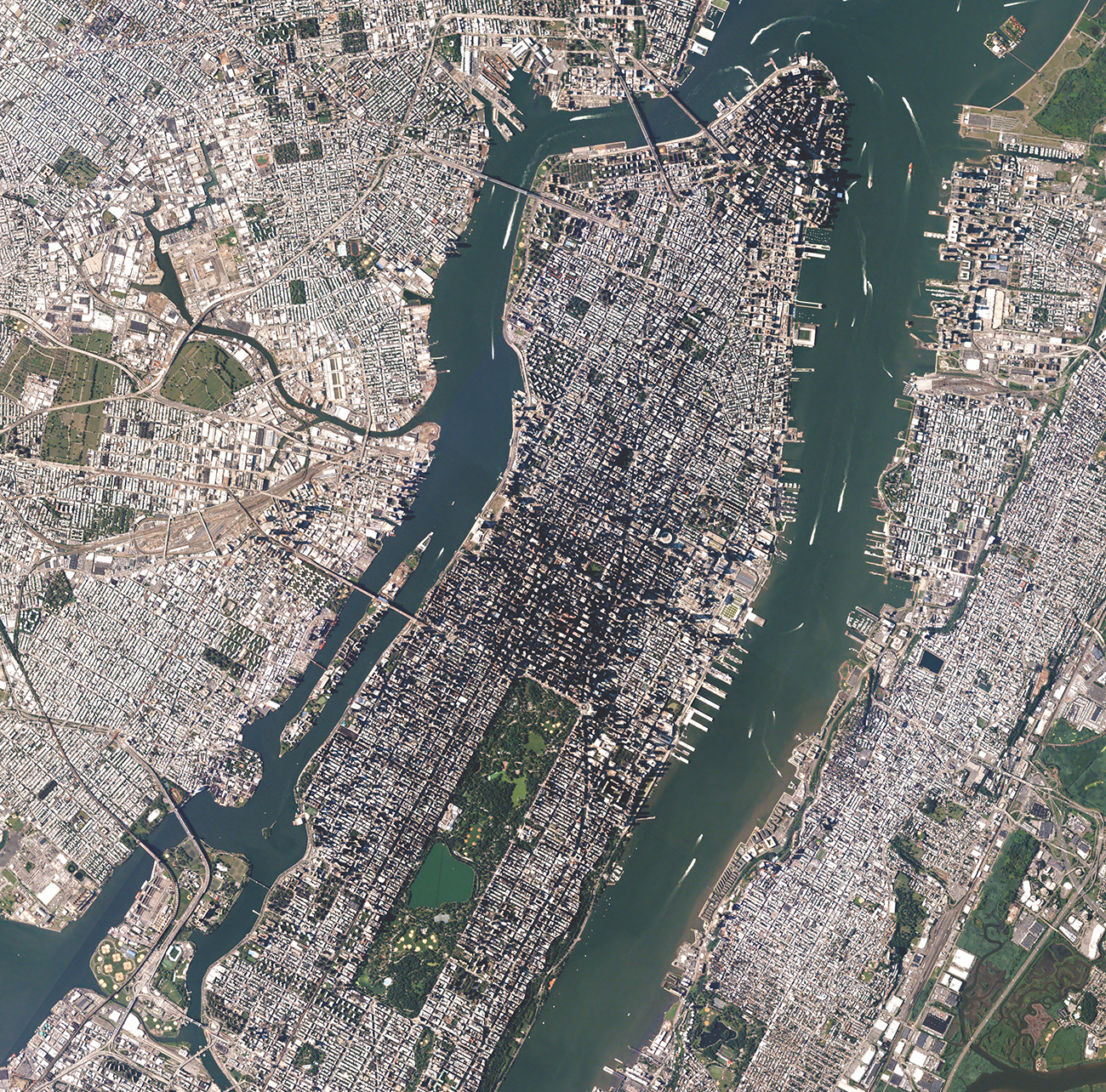 |
PlanetScope • New York, New York, USA • July 15, 2016 |
You probably recognize the above image, but maybe it took you a second or two longer because it’s not oriented in New York City’s customary direction. When we share satellite images we almost always follow the north-is-up cardinal rule since that sends the most intelligible message. But if you want to get abstract, then throw orientation out the window and start rotating. |
 |
PlanetScope • Northern Manitoba, Canada • November 9, 2016 |
Making an image appear abstract is also partly a matter of how the data is cropped. Including a village or landmark within the borders of an image provides a visual reference that can clue us in to what we’re looking at and its scale. Context matters. And for satellite imagery that often means including part of an area’s surroundings. |
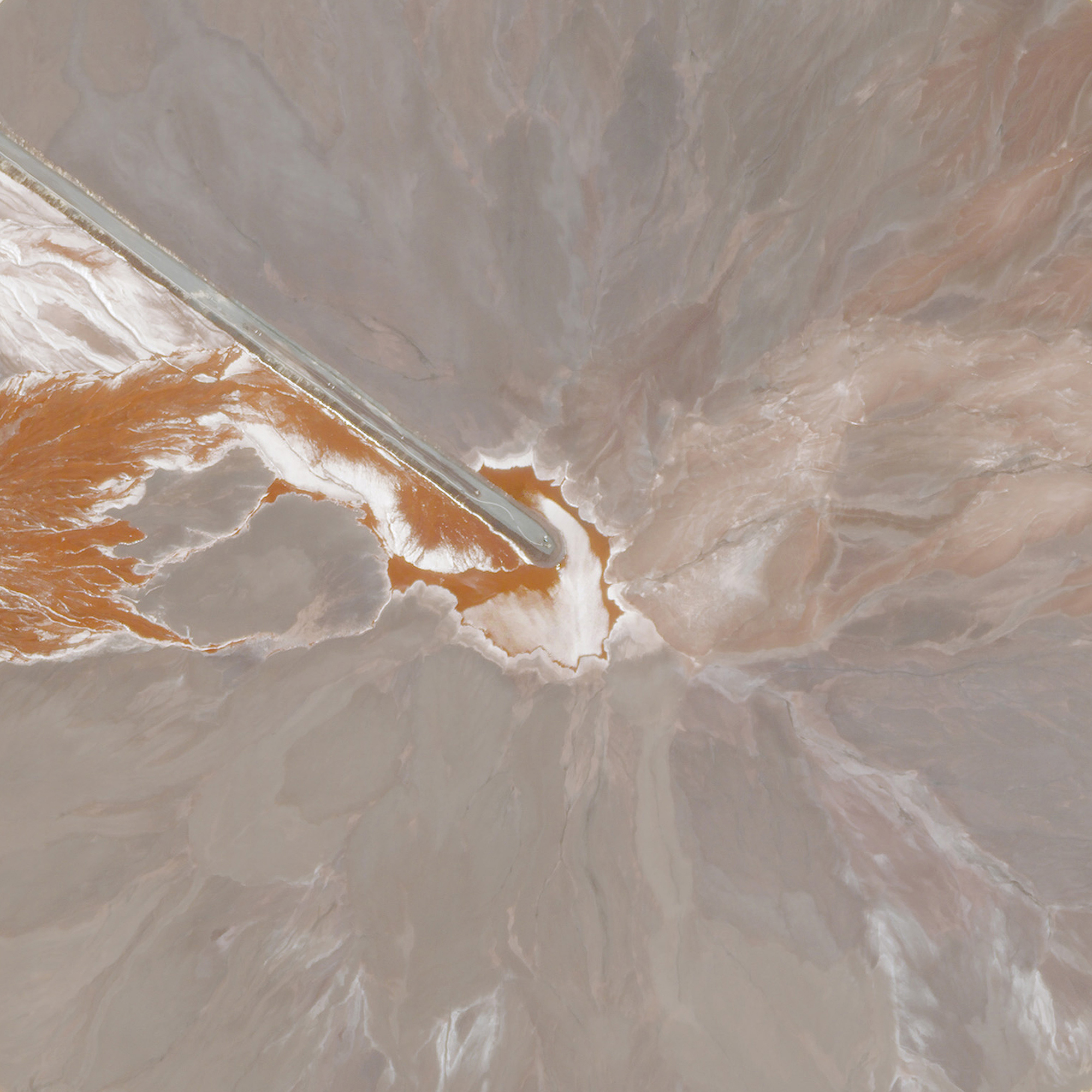 |
SkySat • Prominent Hill, Australia • November 25, 2017 |
It’s not obvious that the abstract patterns and colors of the image above are tailings from an open-pit mine. But if you widen the perspective to include more of its nearby environment, the scene becomes recognizable and aligned with our visual expectations. |
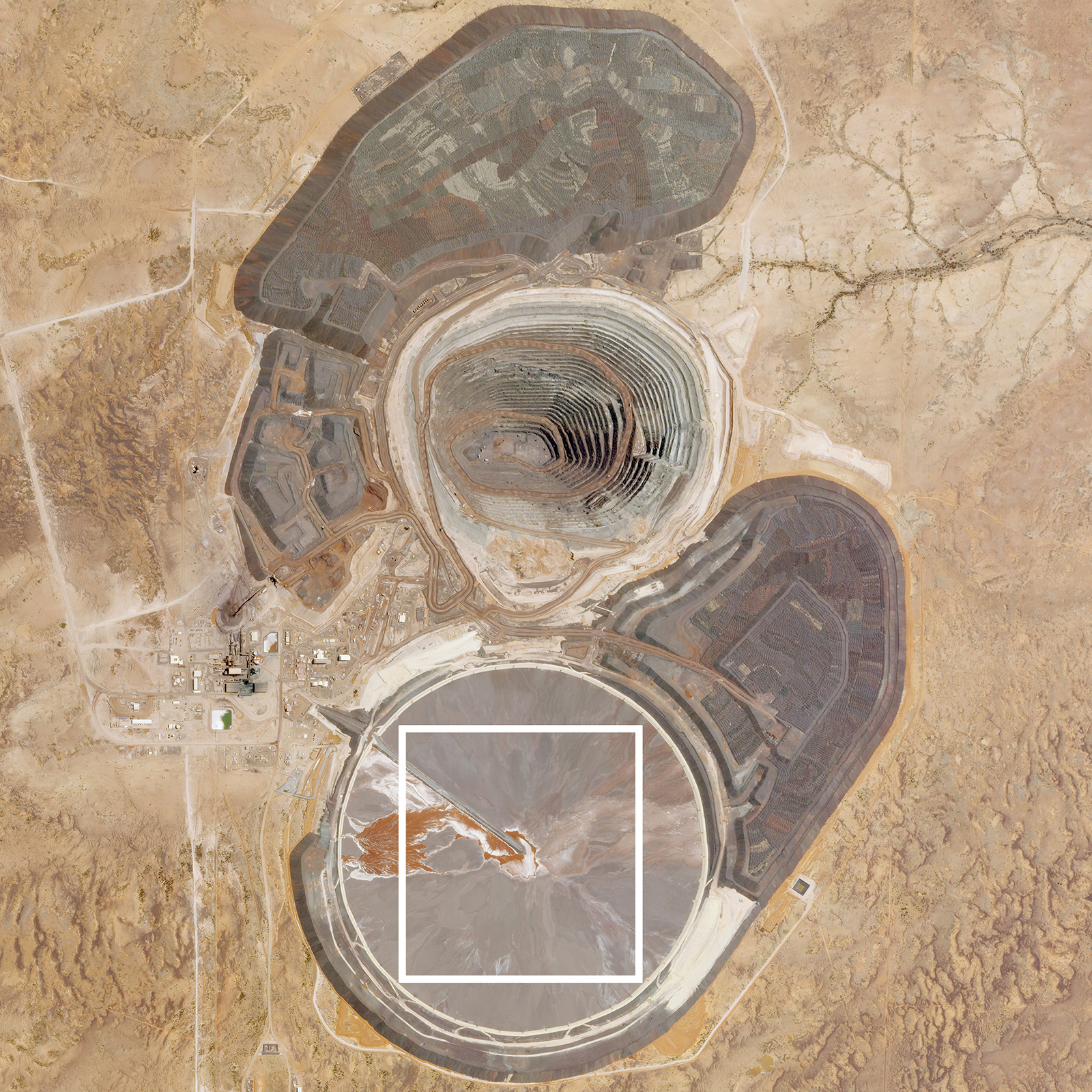 |
SkySat • Prominent Hill, Australia • November 25, 2017 |
Perhaps it’s abstraction’s defiance of what we expect Earth’s surface to look like that makes these images particularly striking. Some places appear so surreal that we can’t compare them to anything in our visual vocabulary. Take this image of salt lakes in Western Australia—a sight sure to make those with trypophobia squeamish. The dry landscape paired with alien-like white, green, and brown lake beds of varying sizes doesn’t have much comparison to anything outside of the Australian Outback. |
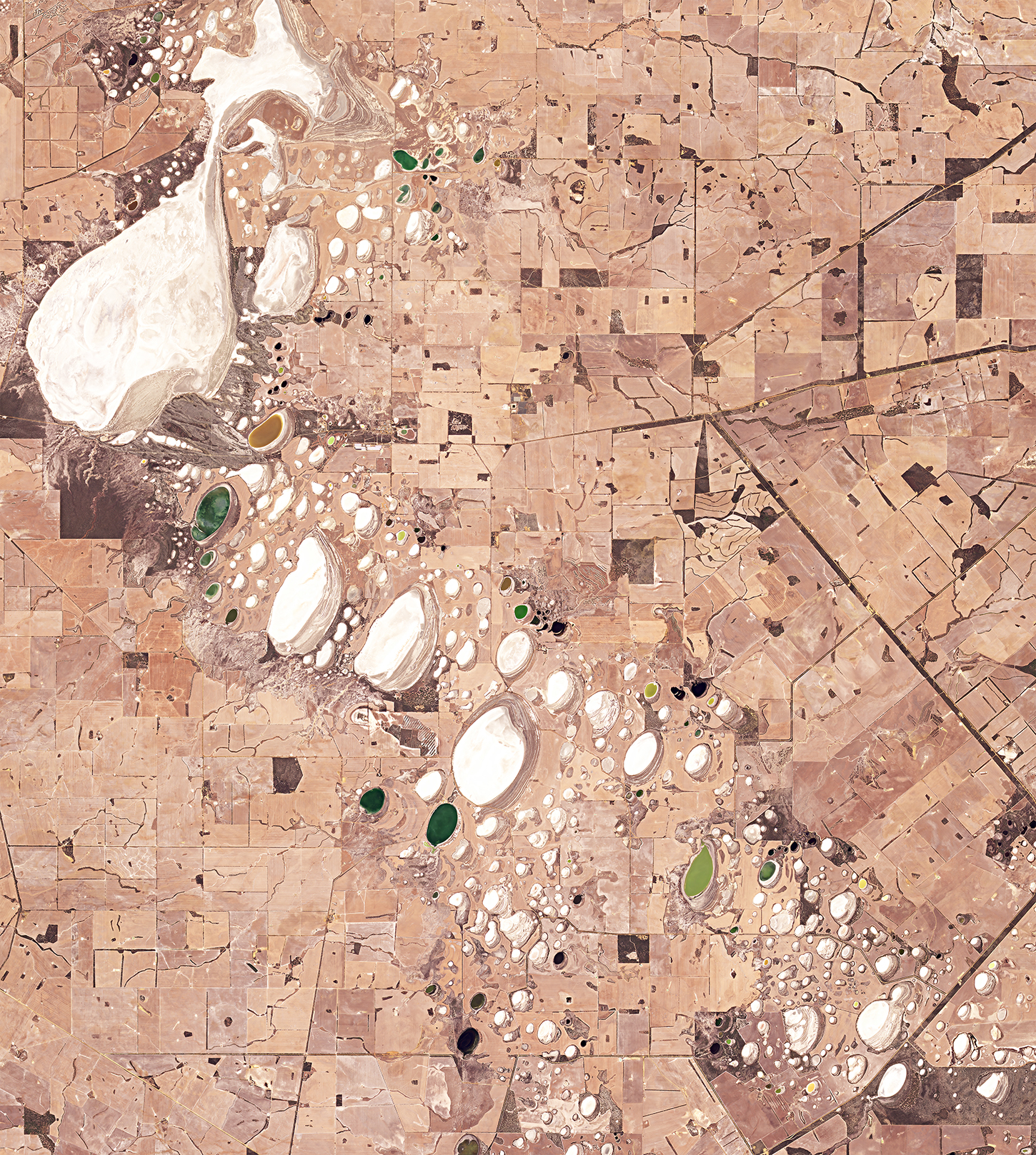 |
PlanetScope • Pingrup, Australia • March 5, 2022 |
Abstract satellite images take a moment to process. They’re a bit vague, dreamy, and otherworldly. And even once you’ve figured out what you’re looking at, it leaves a sort of undefined impression. Like the works of abstract expressionists, they’re designed to illustrate the sublime and the surreal. Which isn’t particularly useful for representing a landscape concisely. But it does make a damn beautiful image. |
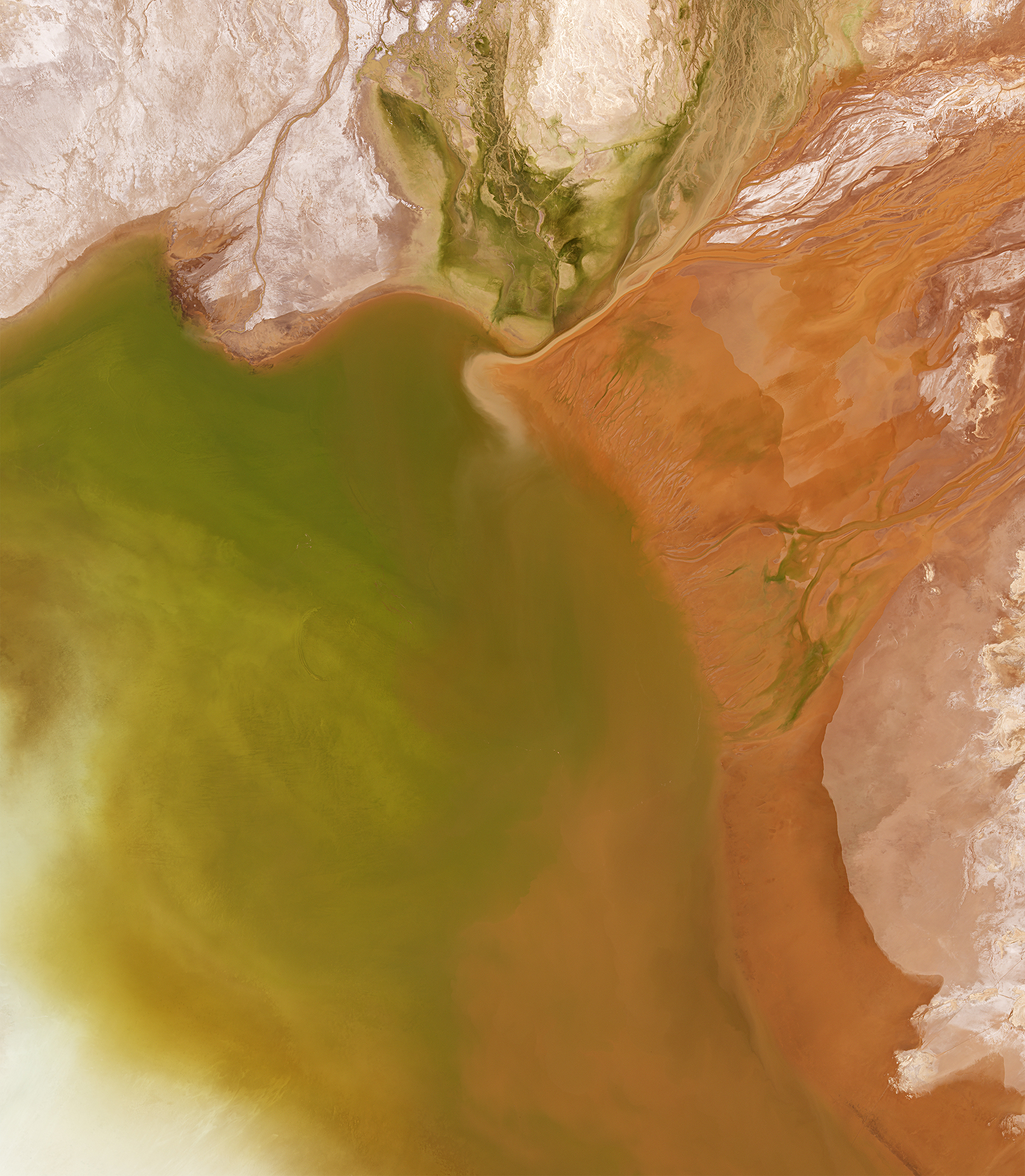 |
PlanetScope • Atahuallpa, Bolivia • January 2, 2022 |
|
|
|
|
What in the World: Valle de la Luna
Throw salt, rock, sand, and wind in a shaker, add a twist of millennia, and you get a landscape that’s as gorgeous as it is inhospitable. This is Valle de la Luna (Moon Valley)—the cheerful counterpart to its neighbor, Valle de la Muerte (Death Valley). And if you find it bears resemblance to the moon or Mars, you’re not alone. Both places are hard to get to and about as friendly to life as is lava. Plus a Mars rover prototype was even tested here since the region’s dry and rocky terrain is comparable to that of the red planet. |
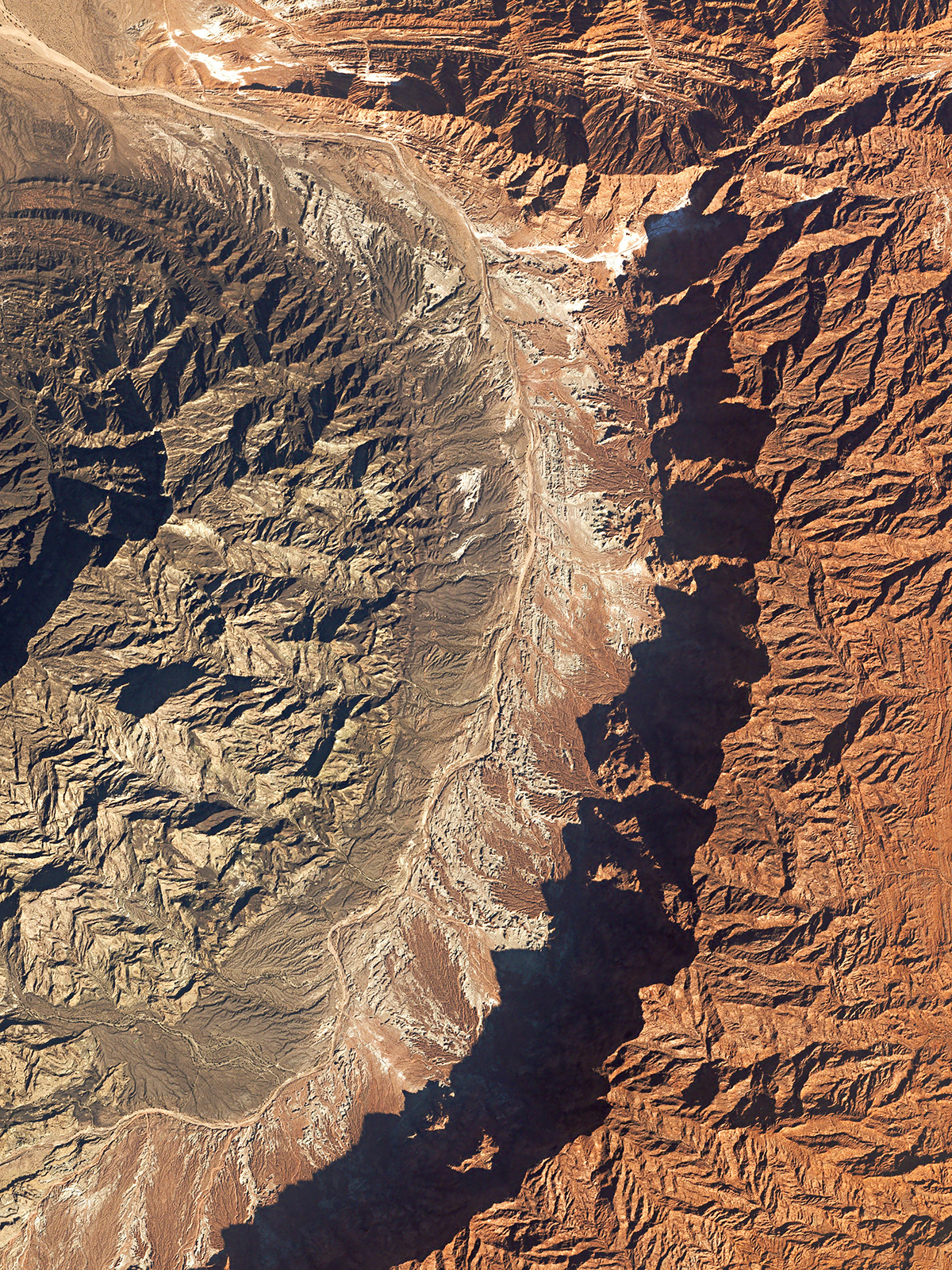 |
PlanetScope • Valle de la Luna, Chile • July 19, 2016 |
|
|
|
|
|
Aircraft Carrier
The saber-rattling has begun as political tensions flare over Nancy Pelosi’s visit to Taiwan this week. At the time of writing, the U.S. Navy had deployed 4 warships to the South China Sea in preparation, including the pictured nuclear-powered USS Ronald Reagan. The aircraft carrier was spotted conducting security operations a day before it pulled into a port in Singapore. But it sure looks like it’s doing donuts to us. |
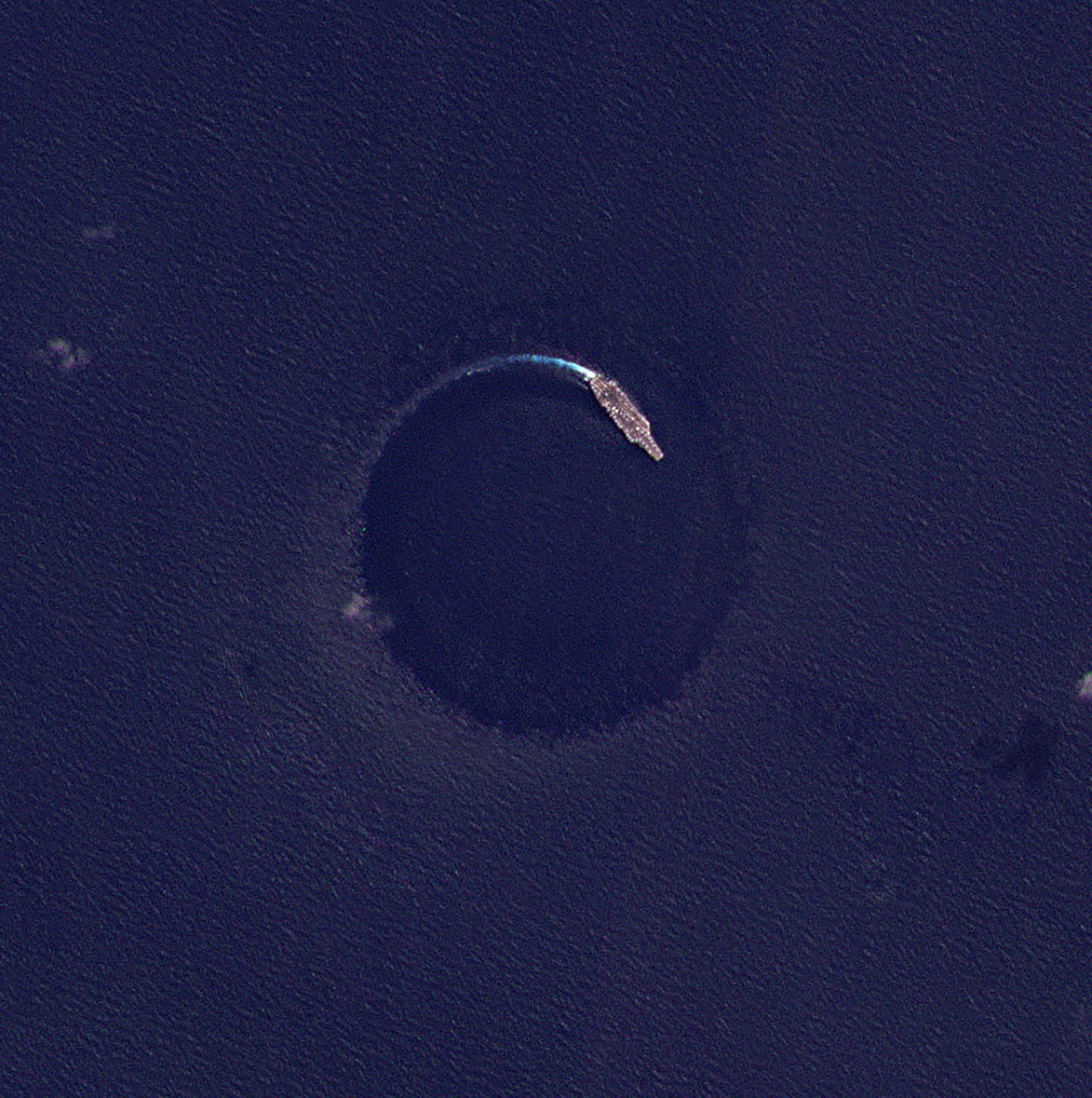 |
PlanetScope • South China Sea • July 21, 2022 |
|
|
|
|
|
|